
Some days everything appears teetering between seasons, falls squarely upon the fault line where mountain dissolves into river, bird into sky. Trees come to blossom to fruit to yellow-brown falling leaf and the moment is indistinguishable from any other. All becomes near-far.
On the lakeshore a small ripple starts at the prod of a curious branch. It follows the rough outline of a myth we’re writing from an unmarked seed until it blends into the pale blue backdrop of another life – as it should be, as each memory exceeds the limits of its body. And if you look carefully enough you can almost make it out, that speck of light crouched on its heels on the farther shores of your imagination. A breath would be enough to make it crumble, to close the gap between the shadow and its quiver.
Another ripple. This time a single leaf shakes loose and climbs down to the water; you remember that you are used to loss, to the landscape finishing your thoughts before they get tangled in speech. Unbound, the leaf now makes itself into a sail, turns to the horizon where hawk and cliff and valley of snow come forward for the first time out of thinnest boundary, out of almost nothingness – which is not impossible to see.
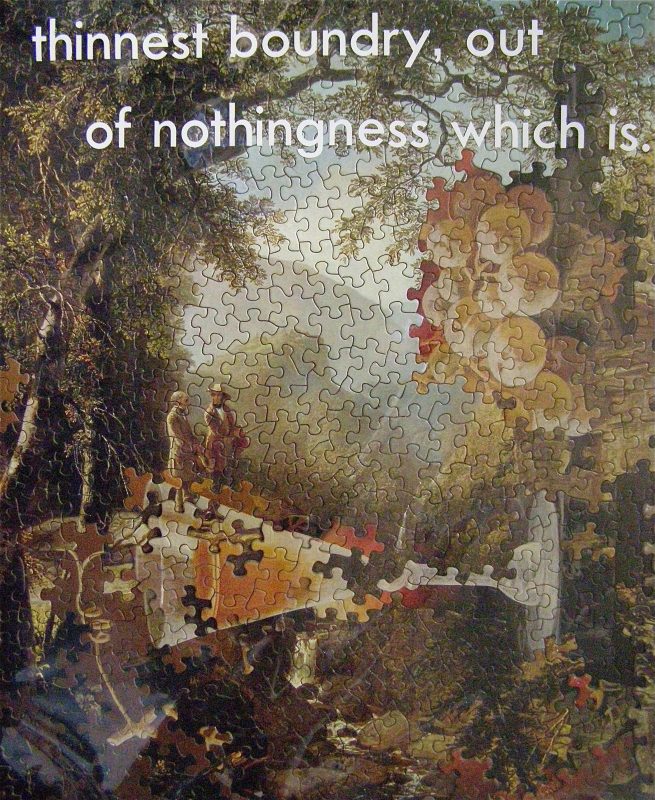
I came to the bridge and stood at the edge of rock combing over the thick brush on the other side. I made the first mark, one line then another, shaping the view into thirds. Along the first line brown roots tangled and sorted themselves out, disappeared again in the dirt out of sight. Brown is an underused color, brown of earth and loam, of boot soles indistinguishable from the ground they stand on.
Along the second line I brought the clouds down to eye level, close enough to appear in reach. They smelled of rain, of fresh blue paint, of trying to remember where they’ve been. Blue is an overused color, blue of eye of the storm, of lake and distance, blue for all that is, or could be.
I want to make another bridge that takes me there but I don’t know the right color for the day after and the day after that. I think of all who’ve wished themselves away from one place to elsewhere, crawled on hands and knees through a story with holes in it just to see how life turns out. I make my choice and go with sun-yellow but run out halfway across open space and have to thin out the rest; I stand back and look over the rickety structure. It will not hold the weight of dreams. Yellow is the color for soft, yellow of dandelion games, of childhood flight. I gauge how large the gap ahead, anchor myself like a leaf to the wind.

What I really meant before was that I’m tired of bridges. Paved roads and double yellow lines. Boulevards and avenues named after the dead and marginally famous. The shallow need to know exact coordinates, how to get from East to West in X number of hours.
But the ways we arrive are always accidental. The fact is that the boulevard and the church steeple all end somewhere, geometrically speaking, and then… That’s what I want to know. Not numbers and dates and blueprints for stone. What lies beyond the faith we’ve put in architectures of the mind?
Rilke said it’s frightening to know how many things are made and unmade with words. How do you unmake all of roads that separate one body from another, one body from itself? How do you name what hasn’t been made yet?
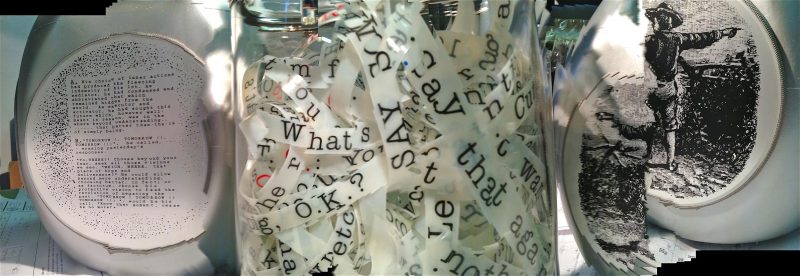
Statues fall roughly along two categories – to remembrance and to forgetting – and both feature one conspicuous design element: one arm extended outward with confidence, stubbornly marking the same spot eternally, which could be yesterday and could be tomorrow. But no one ever looks exactly where they’re pointing. Facing the statue we in fact glimpse only of the past, what has been; and because it is fleeting we look again and again, as if there is something there that could be revised.
This is the tyranny of all monuments – distorted mirrors, bent reflections – while the artist somewhere in his bed is tossing and turning, moaning, No no that’s not how it goes.
And it never does go as it should. Even the artist when pressed for answers is not certain. For that we have instruments of meaning – signs, plaques, guidebooks and brochures – holding every moment hostage to the limit of speech. Everything either is or isn’t – and we choose, or choose not to.
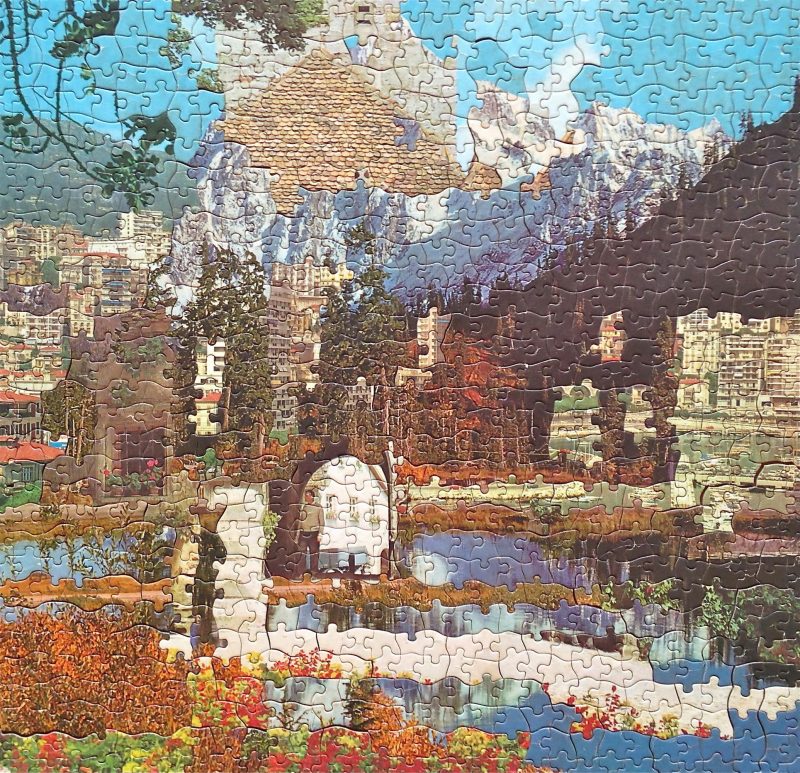
These days we photograph everything and see nothing. We can have everything but possess little. At night I fall asleep to a roar of crickets; in the mornings sometimes I wake to the birds’ instinctual song. And I tell myself that it should be sufficient, to see the colors change at my feet and the small view that a single doorway affords.
Then the mind in its weakness flies again toward memory, both past and not yet imagined. The days suffocate with such clutter and the lines become blurred, there’s a loss of perspective; I come to feel like a one-dimensional cutout in a cardboard script, the whole world a gallery of abandoned backdrops in a film that never quite finds its voice. We’re all talking out of turn, shouting down from the balconies while the alleys churn the sound into a roar.
It’s not an exaggeration when I say that everything is too much and not enough. I’ve heard that even forty seconds of looking out into nature is enough to restore focus and improve concentration. The art of memory relies on simple things. I try to find the smallest patch of green and count the blades that I see until I lose track and see only one. And I linger there for so long and so still that the seconds turn into minutes and I do not mind – I learn to give freely of what has never been mine.
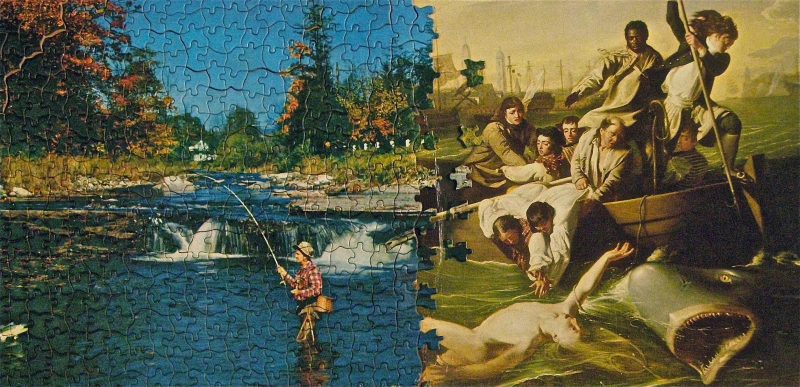
Even when I’m at my greatest moment of ease I am always here and elsewhere. Never now. Parts of me lag behind while others have gone ahead into unknown waters. What can be seen walking around is a ruin on a field when the sunlight makes falling apart seem beautiful. Perfectly bucolic. Then a storm blows in from over the sea and wants to talk futures.
She uses words like rupture, break, and revelation. It gets really philosophical. I say I’m worried about getting caught in the rain. I’m not ready for this. But it’s only darkness without thunder, and I know what that means. I take a deep breath, for now.
When we’re done talking we make plans for another rendezvous. We both check our calendars and so much is already taken with this or that errand, spring cleaning, getting the dirt ready for sudden outbursts of inspiration. For what now has gotten so hard to come by.
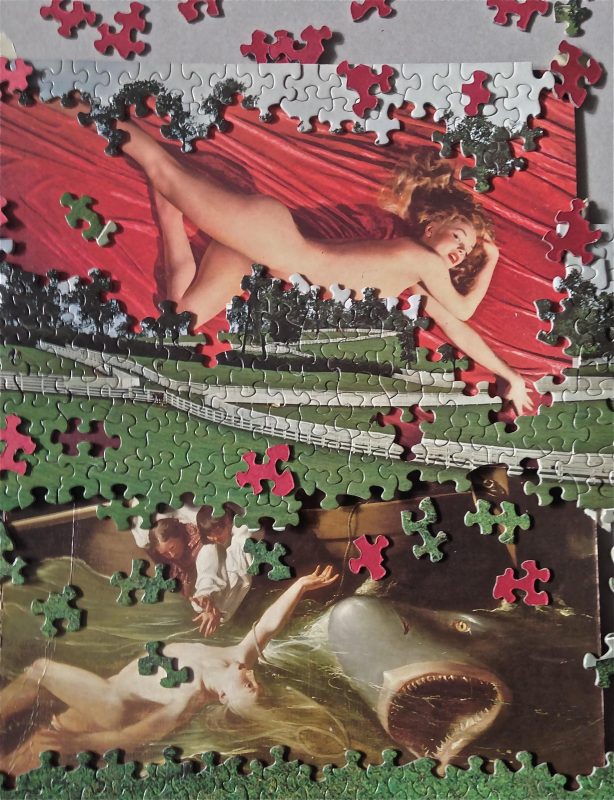
For better or worse I take solace that not everything needs to be finished. Frankly, we all get a little bit distracted when everything falls into place, perfectly aligned and intimate. We’re better at fragments, unmade beds, and wrinkles in the plot. Loose ends and ill-suited pieces on the work surface make for an interesting backstory. Any good architect knows how to leave a few; the rest is a matter of filling in blanks.
David Jones lives and works in the San Francisco East Bay. His work has been exhibited at SFMOMA, The Oakland Museum of California, University Art Museum at UC Berkeley, MIT, and The Whitney Museum of American Art. He is the recipient of grants from the NEA: Individual Artist’s Grant, SFMOMA SECA Award, and Robert Rauschenberg’s Change, Inc. Recent shows include The StART Up Art Fair LA and Robert Berman’s E6 Gallery, SF.
Andrei Guruianu is a Romanian-born writer and professor of writing. He is the author of more than a dozen books of poetry and prose, most recently Dead Reckoning: Transatlantic Passages From Europe to America, a co-authored dialogic and ekphrastic collection of essays and prose poems (SUNY Press). He currently teaches in the Expository Writing Program at New York University.